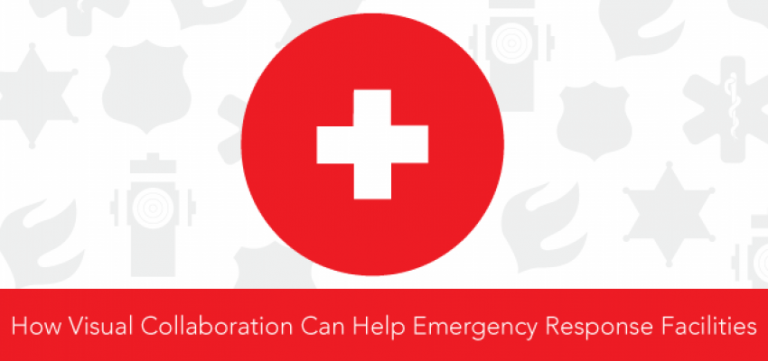How Video Conferencing Can Help Emergency Preparedness & Response Facilities
Visual collaboration tools are quickly becoming a valuable asset when assisting with emergency preparedness and response facilities by allowing them to be proactive rather than just reactive. With the help of video conferencing, government agencies, police departments and health departments are able to broadcast important information quickly and accurately.
Here are a few ways emergency response departments can utilize video collaboration:
Early warning messages
A major issue that has certainly impacted many areas is the lack of warning before a storm; whether it is a tornado, tsunami or any other kind of major disaster. This lack of warning can result in people not having a sufficient amount of time to prepare and evacuate in time. Video technology allows weather facilities to communicate and evacuate towns or cities quicker and earlier. In order to help these processes run smoothly, facilities are also able to educate larger groups of people/audiences on emergency procedures by using video conferencing technology. This technology allows experts and professionals to conduct training programs to a larger group of specialists and authorities, which can increase efficiency and reduce costs.
Analysis
Video conferencing technology can assist with calculating the best possible solution or operation plan for crisis situations. Teams can come together face-to-face regardless of their locations to debrief and analyze operations and disaster preparedness plans. This technology can also help emergency responders access important information in real time in order to efficiently make the best decisions. By having a consistent and successful plan, responders can confidently execute their emergency response plans in the most effective way.
Response
Video conferencing technology has also made it easier for situations needing quick responses. Field responders can communicate face to face and in real time with response facilities to coordinate the best possible solution to the problem. This allows for producing and receiving up to date information regarding any emergency situation, allowing all responders to be on the same page with the least amount of confusion. Video conferencing technology also allows field responders to act quickly and get information out to the public at a rapid and productive pace.
Video conferencing technology has benefitted countless emergency response facilities by making it easier to communicate with responders, educating the public on emergency preparedness and by efficiently executing important up to ocanvadate information regarding any kind of emergency. It has allowed responders to think quickly and change any part of their emergency plan preparation based on the information they receive and keep the public updated on any new information. It has also ensured that any information presented to the public has been confirmed and is universal among emergency facilities, preventing any kind of confusion. Video conferencing technology has changed how facilities respond and act in emergency situations and benefiting the safety of the public.



